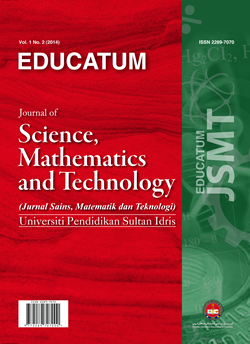Qualitative Analysis of the Transmission Dynamics and Optimal Control of Covid-19
DOI:
https://doi.org/10.37134/ejsmt.vol10.1.7.2023Keywords:
Reproduction Number, Stability Analysis, SEQIHRV model, Control measures, Sensitivity AnalysisAbstract
Globally, the COVID-19 presents a serious concern to the wellbeing of people. COVID-19 was first detected in Wuhan, China. The disease became a source of concern for Nigerians after the country registered its first case in February 2020. Currently, the country has recorded 255,103 confirmed cases, 249,246 recovered cases, and 3,142 deaths as of March 21, 2022.
We proposed a SEQIHRV model to investigate the spread of coronavirus disease in Nigeria. This model defines the infection dynamics' transmission routes as well as effect of contaminated surfaces on the human population. Unfortunately, the virus's propagation and mortality from COVID-19 is increasing daily. Therefore, it is required to manage and control the flow of the infection. The impact of control measures as time-dependent interventions was investigated in this study utilizing optimization technique to determine their effects on the spread of Corona virus. The basic reproduction was calculated and used to calcite the sensitive parameters affecting the system, which revealed the key parameters leading to COVID-19 propagation. The control optimization of the sytem was performed using Pontryagin's maximum principle to determine the best approach for controlling the spread. The discoveries from the simulation showed that the combination of all four control approaches will help to reduce infection to zero in the population.
Downloads
References
Fehr, A. R., and Stanley, P. 2015. Coronaviruses: an overview of their replication and pathogenesis. 1-23.
Gallagher, T. M., and Michael, J. B. 2001. Coronavirus spike proteins in viral entry and pathogenesis. Virology, 279(2), 371-374.
Loyinmi, A.C., Akinfe, T.K. and Ojo, A.A. 2021 Qualitative analysis and dynamical behavior of a Lassa haemorrhagic fever model with exposed rodents and saturated incidence rate, Scientific African, 14, e01028.
Morenikeji EL, Babajide AO and Oluwatobi IK 2021 Application of Homotopy Perturbation Method to The Mathematical Modelling of Temperature Rise During Microwave Hyperthermia. Fudma Journal of Sciences. 5(2): 273–282.
Elengoe, A. 2020. COVID-19 outbreak in Malaysia. Osong public health and research perspectives, 11(3), 93.
Agbomola, J.O. and Loyinmi, A.C. 2022 Modelling the impact of some control strategies on the transmission dynamics of Ebola virus in human-bat population: An optimal control analysis, Heliyon, 8(12), e12121.
Nigeria Centre for Disease Control. 2020. First case of corona virus disease confirmed in Nigeria.
Oluwatobi, I.K. and Erinle-Ibrahim, L.M. 2021 Mathematical modelling of pneumonia dynamics of children under the age of five.
Krishna, M. V. 2020. Mathematical modelling on diffusion and control of COVID–19. Infectious Disease Modelling , 5, 588-597.
Olaniyi,, S., Obabiyi, O. S., Okosun, K. O., Oladipo, A. T., & Adewale, S. O. 2020. Mathematical modelling and optimal cost-effective control of COVID-19 transmission dynamics. The European Physical Journal Plus, 135(11), 938.
Madubueze, C. E., Sambo, D., & Isaac, O. O. 2020. Controlling the spread of COVID-19: optimal control analysis. Computational and Mathematical methods in Medicine, 2020.
Daniel, D. O. 2021. Mathematical model for the transmission of Covid-19 with nonlinear forc-es of infection and the need for prevention measure in Nigeria. J. Infect. Dis. Epidem, 6, 158.
European Centre for Disease Prevention and Control. 2020. Disease background of COVID-19.
Downloads
Published
Issue
Section
License
Copyright (c) 2023 Oluwatobi Kabir Idowu, Adedapo Chris Loyinmi

This work is licensed under a Creative Commons Attribution-NonCommercial-ShareAlike 4.0 International License.





